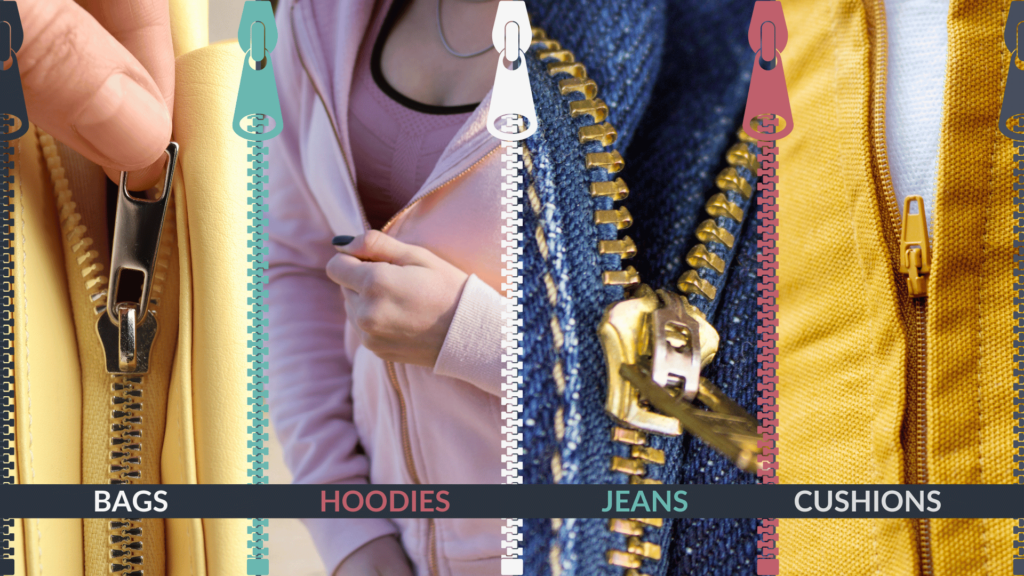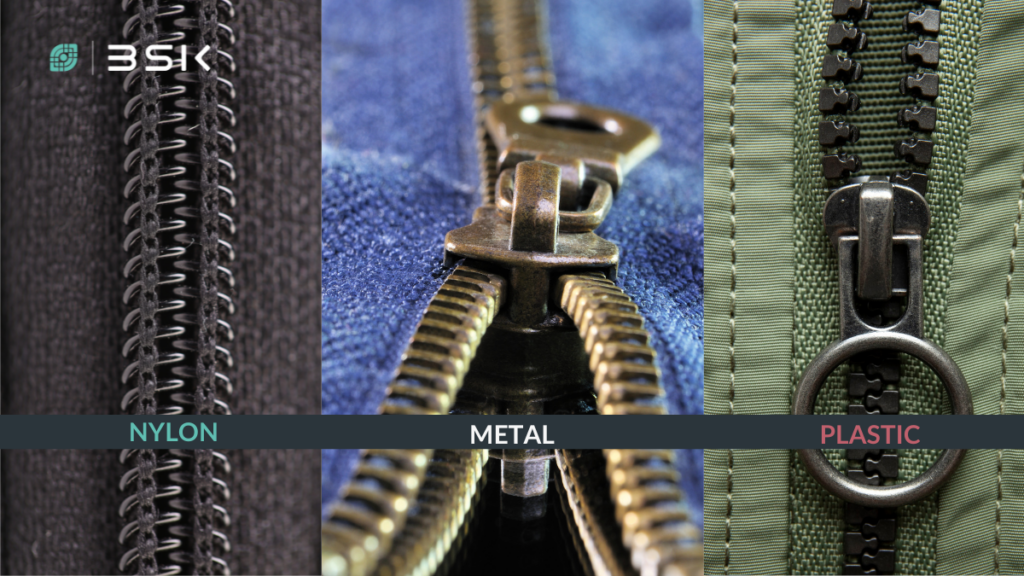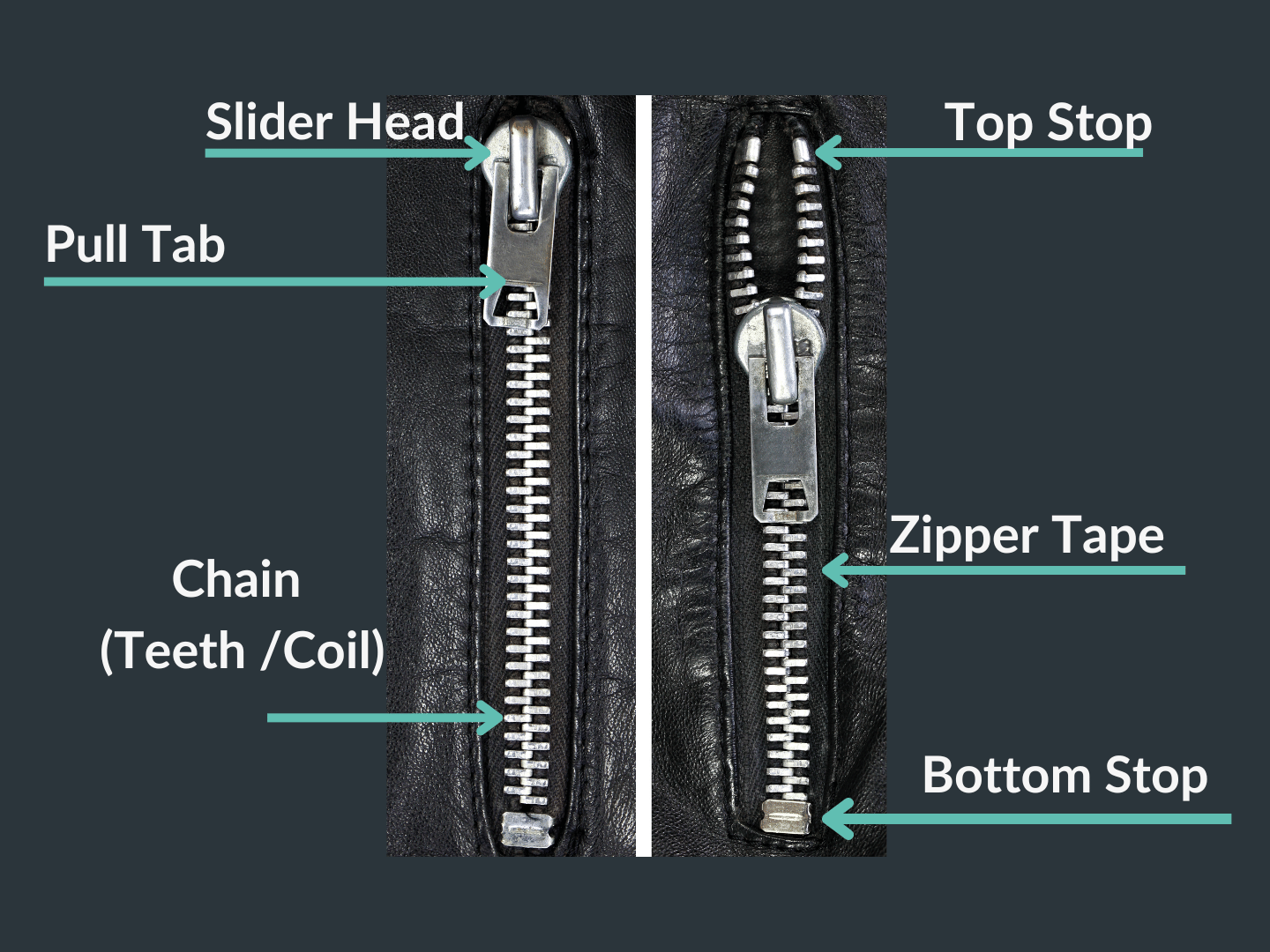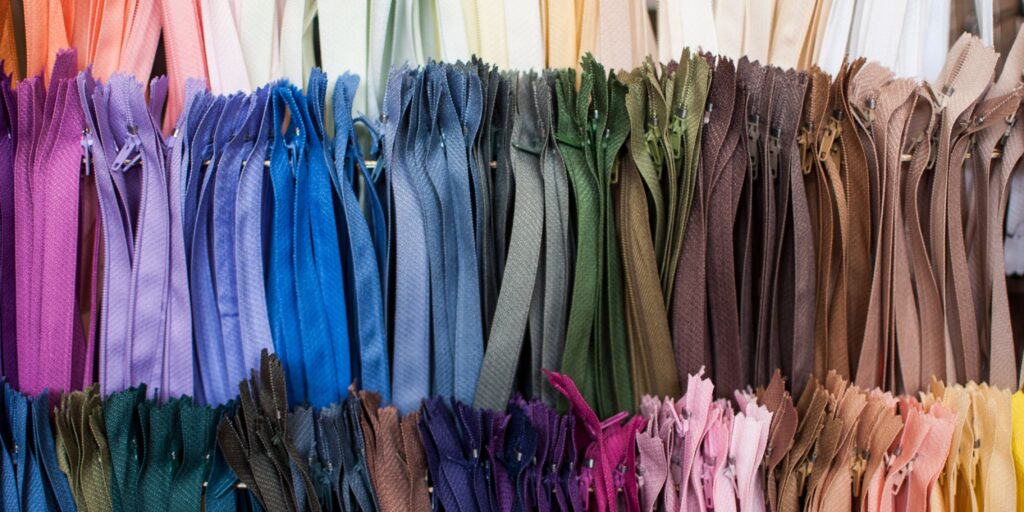One of the most important bag components is zippers. Imagine carrying a bag and having your things spill out for all to see. At the same time, your face has turned red like a hot frying pan. This is why I’m writing this article about everything you need to know about zippers.
The zipper is a vital component that guarantees the safety of a bag’s contents, whether a purse or bag. I cannot overstate how important the zipper is, so I’m sorry, I overdo it a little. Nobody wants to experience the embarrassment or frustration of a broken zipper or fear of losing valuables. That’s why choosing a bag with the right zipper is important, whether you prioritize fashion over function or vice versa.

What are Zippers?
Well, unless you’ve been living under a rock, allow me to inform you (the best I can) what a zipper is. A zipper consists of two parallel rows of teeth that interlock or separate through the movement of a slider. You will have seen them practically everywhere, not only on purses and backpacks. On your clothing, your jackets, jeans, and dresses. From your pillowcases on your sofa to your curtains. Have you ever been camping and found yourself in need of a good night’s sleep, but the bugs and rain just won’t let you be? This important component helped us with a good night’s sleep in the great outdoors. Thank you, zipper!
History of Zippers
The history reveals a fascinating journey of innovation and evolution in fastening technology. The first patent for a “Continuous Clothing Closure” was filed by Elias Howe Jr. in 1851, but it was not pursued commercially. He was busy inventing and promoting what would become the sewing machine. Whitcomb L. Judson patented the “Slide Fastener” or “Clasp Locker” in 1891, but it had limited success due to its complexity.
It was not until Gideon Sundback‘s breakthrough in 1911 that the zipper as we know it today began to take shape. Sundback significantly improved the zipper, patenting the “Hookless Fastener No. 1” in 1913 and later the “Separable Fastener” in 1917. Sundback’s version featured interlocking metal teeth, which proved more reliable. The term “zipper” was forged by the B. F. Goodrich Company in 1923 due to its sound when fastened.
Military Use
Zippers have a rich history that dates back to World War I. Did you know they were extensively used in soldiers’ garments and accessories during the war? This showed the utility of zippers in military applications, proving how crucial they were to the war effort. In World War II, metal shortages led to the development of using plastic, further growing their usage.
Fashion and Space
After World War 1, zippers became more widely used in the 1920s and 1930s, particularly in children’s clothing and men’s trousers. The popularity of zippers soared, with sales rising significantly over the years, from 24,000 in 1917 to 60 million in 1934. Zippers have since found diverse applications in various industries, including fashion, and space exploration (NASA used them for pressure suits).
They have even become symbols of rebellion post-World War II, especially associated with biker jackets. The continuous evolution of zippers has led to advancements in materials and functionalities, such as nylon zippers and two-way zippers. Overall, the history of zippers showcases a continuous journey of innovation, from their humble beginnings to becoming ubiquitous fastening solutions in modern life.

Materials Used
When discussing the materials used in the zipper, we specifically talk about what the zipper teeth are made of. These parts interlock when you zip the zipper. Metal and plastic are two types of materials that can make the zippers.
Molded Plastic
Molded Plastics are ideal for lightweight and flexible applications, making them well-suited for sportswear, children’s clothing, and other lightweight garments. The zippers have plastic teeth, so they don’t rust and are perfect for outdoor use like tents and sleeping bags. Moreover, they are available in different colors and sizes, giving you more options for designing and adding a pop of color to your projects.
Metal
Metal zippers feature durable teeth in various metal finishes, including shiny finishes like brass, nickel, and gunmetal, and those with a more weathered appearance like antique brass or antique silver. They are more rigid than other zippers, making them suited for straight seams and closures without too much horizontal stress. Advantages: Durable teeth ensure longevity. Variety in metal finishes allows for aesthetic flexibility to match different project needs. The rigidity of metal zippers makes them ideal for applications requiring straight seams, offering a more structured appearance.
Nylon
Nylon coil zippers are exceptionally strong and flexible. The zipper teeth are made of flexible nylon with a special “coiled” design that allows them to interlock very closely. Advantages include good tolerance for curves and horizontal stress, fitting various projects. Ideal for strong, flexible items like luggage, backpacks, tents, and boots. Also great for daily items like pants, totes, and jackets.
Invisible (type)
Although they are technically small nylon coil zippers, they have one unique feature that sets them apart. When zipped, the zipper teeth are completely hidden! Commonly used on gowns, blouses, skirts, upholstery, and cushions, these lightweight zippers are great for creating sleek and discreet designs.
The Positives of raw materials like stainless steel and brass increase durability and reduce wear. Made from raw metal materials, they can withstand high temperatures without deformation, making them appropriate for various environments and uses.
Limitations of raw materials can be costlier than synthetics, potentially raising production expenses. Metal zippers are often heavier than their synthetic counterparts, which may not be suitable for lightweight garments or applications. Certain metals, such as brass, may corrode, particularly in humid or corrosive environments, affecting the zipper’s longevity.

Styles
There are too many types of zippers to choose from, so it is not easy to describe each one without reading about zippers for an hour or so. I will list the two main zippers that are commonly used.
There are two types of zippers: non-separating and separating zippers. Non-separating zippers, also known as closed-end zippers, do not separate at the bottom and are commonly used for items such as jeans, dresses, boots, and handbags.
Separating zippers have a box and pin mechanism in the slider that completely separates and reconnects at the bottom. They are often referred to as jacket zippers and are commonly used on zippered hoodies, coats, and any other garment that needs to open easily.
Manufacturing Process
The manufacturing process of zippers has a rich history, marked by significant changes. In the 1930s, Sundback revolutionized his original method by introducing molten iron to create teeth. A technique later replaced by zinc for enhanced efficiency. In the 1940s, they flattened the wire, punched it into scoops, and then shaped it into a Y to attach it to the tape.
Plastics, on the other hand, are a testament to versatility. Creating various styles, such as spiral, toothed, ladder, or woven. You can make these by heating plastic wire to form loops or weaving plastic wire into cloth, though weaving is less common in the US.
Quality Control
Many manufacturers continuously work to develop and improve in various areas. Including quality management, occupational safety and health management, and environmental management systems. They actively ensure their conformity to international and national standards, as evidenced by their numerous certifications. Two main certifications many manufacturers use are the OEKO-TEX Standard and the IS0 9001 Certifications.

Design and Aesthetics
Using metal zippers from raw materials can provide a more luxurious or high-end appearance than synthetic zippers. Manufacturing zippers become more flexible as raw materials are easily customizable to achieve unique finishes and designs. Using raw materials offers benefits, including durability, versatility, and customization options.
Utilizing synthetic materials in zipper production can offer a range of practical and aesthetic advantages, particularly in accessibility and innovation. Synthetic zippers are made from high-quality plastics and polymers. These are not only lightweight but also highly resistant to corrosion. So, you don’t have to worry about rusting or wear and tear. Making them an ideal choice for various applications. These materials allow for a wide spectrum of colors and styles, allowing designers to match or contrast the bag’s fabric. Customizable synthetics offer enhanced functionality, including water resistance or self-repairing features, significantly extending the product’s lifespan.
Choosing the right material in manufacturing is important in bag design and aesthetic appeal. While metals exude a classic and luxurious vibe. Synthetics offer a modern and universal look that can be tailored to fit any design ethos. Selecting materials that align with the desired functionality, durability, and style. Designers can significantly elevate the appeal of their bags. The integration of thoughtfully chosen materials not only enhances the visual allure. It also contributes to the practicality and uniqueness of the design. Making each piece stand out in the competitive world of fashion accessories.
Conclusion
In conclusion, zippers have revolutionized fastening mechanisms and are essential to modern design and manufacturing. They offer convenience, reliability, and versatility, making them a crucial element in bag manufacturing. This important component ensures the safety and accessibility of bag contents while enhancing the product’s aesthetic appeal. This simple yet ingenious invention continues to be a cornerstone. In developing efficient, durable, user-friendly bags, underscoring its enduring importance in everyday life.
